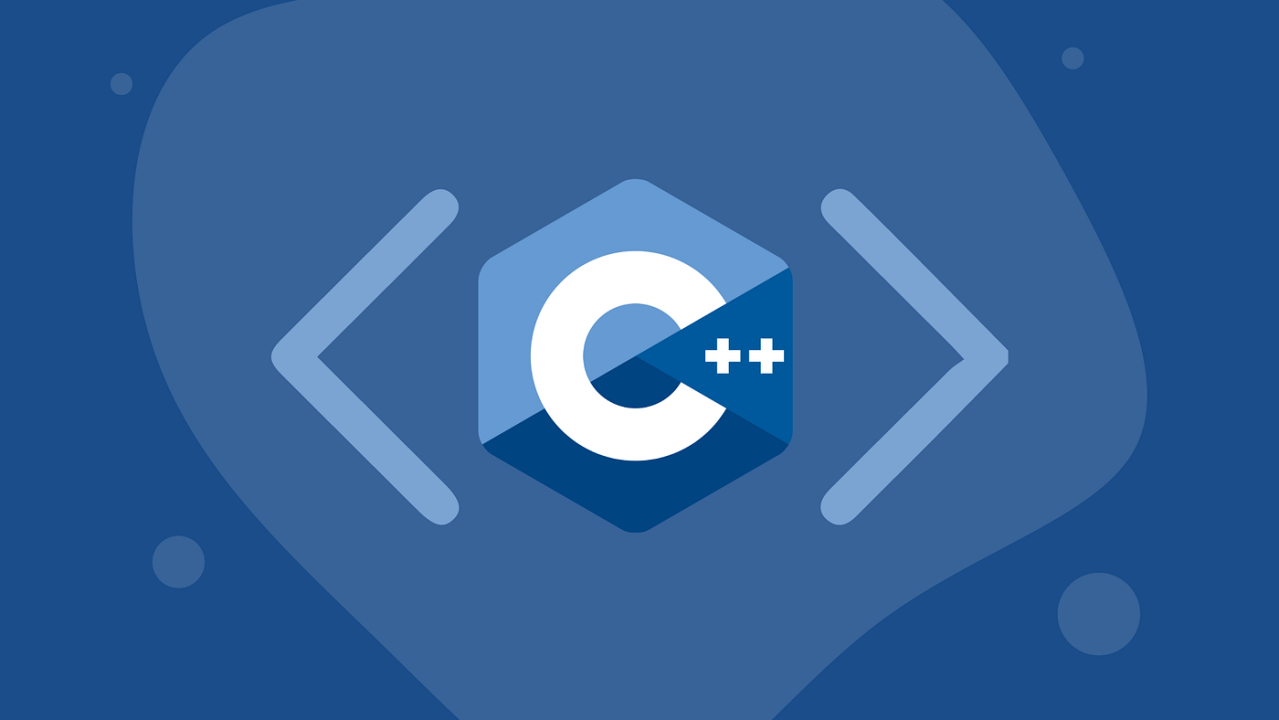Understanding Object Copying in C++: Behind the Scenes of Assignments
One of the key reasons C++ is such a powerful language lies in its fine-grained control over memory management and object lifecycle. However, this flexibility comes with the responsibility of understanding how objects are copied, moved, and optimized by the compiler. Let’s dive into the specifics of what happens when you assign an object in C++, using this simple code snippet as our example:
Card card = Card("Hearts", "5");On the surface, this might look like a straightforward assignment of a Card object. But there’s a lot happening behind the scenes, especially when it comes to object construction, copying, and potential optimizations. In this post, we’ll dissect the process step by step to uncover how C++ handles this situation.
Step 1: Temporary Object Creation
Card("Hearts", "5")In the above expression, we are calling a constructor of the Card class that takes two arguments (e.g., a suit like "Hearts" and a rank like "5"). This creates a temporary object of type Card.
In C++, a temporary object is an unnamed object that exists only during the statement in which it’s created. This temporary is an expression that doesn’t have a persistent address in memory. Once the statement ends, the object is slated for destruction.
In traditional (pre-C++11) C++, this temporary object would be constructed and then copied into the target object (i.e., card). However, things are slightly different in modern C++, thanks to a feature called copy elision, which we’ll discuss shortly.
Step 2: Copy Initialization
Card card = Card("Hearts", "5");This line of code employs what is known as copy initialization. When the = symbol is used during the initialization of an object, the C++ standard typically dictates that the compiler should create the object on the right-hand side and then use the copy constructor to initialize the left-hand side object.
Copy Constructor:
A copy constructor in C++ looks like this:
Card(const Card& other);The copy constructor takes a constant reference to an existing object and duplicates its contents to initialize the new object. In our example, this would mean:
- A temporary
Card("Hearts", "5")is created. - The compiler invokes the copy constructor to initialize
cardwith the values of this temporary object. - The temporary object is then destroyed.
In summary, traditionally, two objects are involved: the temporary one and the final one (the left-hand side of the assignment). But, this process can be inefficient, so modern C++ introduces optimizations to avoid unnecessary copying.
Step 3: Enter Copy Elision
In C++11 and beyond, compilers are allowed to optimize away the extra copy operation through a process known as copy elision. Essentially, instead of creating the temporary object and then copying it, the compiler can directly construct the final object in place.
Let’s illustrate this with a step-by-step comparison:
Without Copy Elision (Pre-C++11)
- Temporary Object Creation:
Card("Hearts", "5")creates a temporary object. - Copy: The
cardobject is initialized by copying the temporary object using the copy constructor. - Destruction: The temporary object is destroyed after the assignment.
With Copy Elision (C++11 and Later)
- Direct Initialization: The compiler skips the creation of the temporary object and directly constructs
cardusing the constructorCard("Hearts", "5"). No copy operation is needed. - No Temporary: There’s no temporary object to destroy since it was never created in the first place.
Here’s why this matters: by eliminating the need to create a temporary object and copy it, copy elision improves both performance (by reducing unnecessary operations) and memory usage (by avoiding additional allocations).
Step 4: Move Semantics (C++11 and Later)
If copy elision cannot be performed (for instance, if you explicitly prevent it or under certain complex scenarios), C++11 also introduces move semantics. Instead of copying the temporary object, the compiler may choose to move it.
This is achieved using the move constructor:
Card(Card&& other); // Move constructorThe move constructor is designed to “steal” resources (e.g., pointers or dynamically allocated memory) from the temporary object rather than copying them. This is much more efficient than copying, especially for objects that manage external resources like dynamic memory, file handles, or network connections.
In our example:
- The temporary
Card("Hearts", "5")is created. - The move constructor transfers the internal state (like the suit and rank) from the temporary object to
cardwithout copying. - The temporary object is still destroyed, but its resources have already been transferred, so the destructor does not need to perform any cleanup.
Step 5: Destruction of the Temporary Object
If no copy elision or move occurs, the temporary Card object is destroyed after the assignment. However, as we’ve seen, modern C++ optimizes this step away in most cases.
When is the Copy Constructor Called?
While modern C++ optimizations like copy elision and move semantics significantly reduce the number of times the copy constructor is called, there are still cases where it might be used. For example:
- If you disable copy elision explicitly.
- When dealing with complex objects or non-temporary objects.
- If the class doesn’t define a move constructor and the copy constructor must be used instead.
You can explicitly prevent copying by deleting the copy constructor, like so:
Card(const Card&) = delete;In this case, any attempt to copy a Card object would result in a compilation error.
Recap
The line of code:
Card card = Card("Hearts", "5");may seem simple, but it actually touches on several important aspects of C++: temporary objects, copy constructors, move constructors, and compiler optimizations like copy elision.
- Pre-C++11: It would involve creating a temporary object, copying it using the copy constructor, and then destroying the temporary.
- In modern C++ (C++11 and beyond): The compiler often optimizes this using copy elision, constructing
carddirectly in its final location without copying. If copy elision isn’t possible, the move constructor may be used to transfer resources efficiently.
These optimizations help C++ programs be more efficient, both in terms of performance and memory usage, while still giving developers the control they need when dealing with complex object lifecycles.
When to Use Card card = Card("Hearts", "5"); vs. Card card("Hearts", "5");
Both styles of object initialization in C++ can seem similar at first glance, but they have subtle differences that affect readability, performance, and even semantics in certain contexts. Let’s explore when to use each form and why.
1. Card card = Card("Hearts", "5"); (Copy Initialization)
When to Use:
- Clarity and Readability:
In cases where you want to emphasize that the object is being initialized from an expression rather than a direct constructor call, this form may feel more readable to some developers. It’s especially common in C++ codebases that favor a style similar to other languages like Python and Java, where this form looks like a variable is being assigned.
Card card = Card("Hearts", "5");
// More similar to other languages like Python- Legacy Code Compatibility:
Older C++ codebases (pre-C++11) often used this form because copy initialization was the common way to initialize objects. If you’re working on such a project, using this form might help maintain a consistent coding style. - Initialization Lists in Classes:
Copy initialization is sometimes seen in constructor initializer lists for class members, especially when initializing member objects with other temporary objects:
class Deck {
Card ace_of_spades; // Declare a member object of type Card
public:
Deck() { // Constructor
// assign ace_of_spades by creating a Card object
Card temp("Spades", "A"); // Create a temp Card
ace_of_spades = temp; // Copy the temp to aceOfSpades
}
};
- For Uniformity in Expression Evaluation:
Copy initialization allows expressions involving more complex or computed values. For example, if you wanted to initialize an object based on the result of a function or some logic, you might prefer copy initialization:
Card card = get_random_card();
// Copy initialization from a function resultIn this case, copy initialization emphasizes the assignment of an already evaluated expression, rather than direct construction with specific arguments.
When Not to Use:
- Unnecessary Verbosity:
If there’s no clear need to use the extra= Card(...)expression, this syntax might feel verbose or redundant. In particular, if copy elision is guaranteed, the simpler direct initialization form (discussed next) can be preferred. - When Direct Initialization is More Idiomatic:
Some C++ coding guidelines and developers prefer to use direct initialization because it’s more explicit about calling the constructor.
2. Card card("Hearts", "5"); (Direct Initialization)
This is called direct initialization, and it directly calls the constructor of the class to create the object card. Here’s when you’d typically choose this form.
When to Use:
- Simplicity and Performance:
Direct initialization is the most straightforward way to construct an object in C++. There’s no need for the compiler to consider copy/move semantics, and in most cases, it’s more efficient (even though copy elision usually makes this a non-issue). This form simply says: “call the constructor with these arguments.”
Card card("Hearts", "5"); // Directly calls constructor- Avoid Ambiguity:
If your class has multiple constructors, using direct initialization can make it more explicit which constructor you are calling. This form gives more control and avoids potential confusion about whether the compiler will copy, move, or elide the temporary. - Constructing Complex Objects:
When initializing objects that have more complex constructors (e.g., those that involve dynamic memory allocation or managing external resources), direct initialization is clearer and less error-prone.
std::vector<int> numbers(10, 0);
// Directly initializes a vector with 10 elements- Explicit Resource Management:
In cases where you’re working with certain kinds of objects, such as file handles, network sockets, or memory buffers, direct initialization is preferred because it makes the allocation and initialization of resources more explicit. - Constructor Overloading:
When a class has overloaded constructors, using direct initialization helps the compiler select the correct constructor without needing to worry about the complexities of copy/move constructors.
When Not to Use:
- Readability in Complex Expressions:
If you’re initializing an object based on a function call or some more complex expression, direct initialization can look awkward or less readable. Copy initialization can make such cases clearer:
Card card = get_random_card();
// Easier to understand the flow of dataThe above is preferable over trying to nest complex expressions into direct initialization.
Key Differences Between the Two:
Copy Initialization:
- May involve an extra step (copy or move constructor), but modern C++ compilers typically optimize this away with copy elision.
- Syntax is more common in scenarios where objects are initialized from results of expressions.
- Can look redundant, as it’s essentially a two-step process (create an object and then assign it).
Direct Initialization:
- Directly calls the constructor and creates the object in one step.
- Preferred for simple object construction where you’re directly passing arguments to the constructor.
- Less ambiguous, more efficient (with no unnecessary constructor calls).
Which Should You Use?
For most day-to-day C++ programming tasks, direct initialization is preferred, because:
- It’s simpler.
- It avoids any unnecessary confusion around copying or moving.
- It explicitly calls the constructor you intend to use.
Card card("Hearts", "5"); // Simple, clear, efficientHowever, there are specific cases where copy initialization might be more appropriate:
- When you’re initializing from an expression, function call, or more complex logic.
- When working in older codebases where this style is more common.
- When working with certain class member initialization scenarios.
Card card = get_random_card();
// More readable when initializing from a function resultIn modern C++, thanks to copy elision and move semantics, both forms of initialization are highly optimized. Ultimately, the choice often comes down to style and readability rather than performance concerns. However, understanding when and why to use one over the other helps write more idiomatic and efficient C++ code.
More Reading
For more reading on this topic, check out the following resources:
- https://en.wikipedia.org/wiki/Assignment_operator_(C%2B%2B)
- https://en.wikipedia.org/wiki/Copy_constructor_(C%2B%2B)
References
[1] Bjarne Stroustrup, The C++ Programming Language. Addison Wesley, 1991.
[2] C++ Community, “cppreference.com,” Cppreference.com, 2019. Available: https://en.cppreference.com/w/
[3] B. Stroustrup and H. Sutter, “C++ Core Guidelines,” isocpp.github.io, Oct. 09, 2024. Available: https://isocpp.github.io/CppCoreGuidelines/CppCoreGuidelines
Image Source
A. Pain, “The Importance of C++ in Modern Software Development,” Linkedin.com, 2024. Available: https://www.linkedin.com/pulse/importance-c-modern-software-development-aritra-pain-wf5lc/. [Accessed: Oct. 09, 2024]
Notes
The content in this blog post has been refined using AI to ensure clarity, accuracy, and depth, while still reflecting the author’s unique perspective and expertise.


